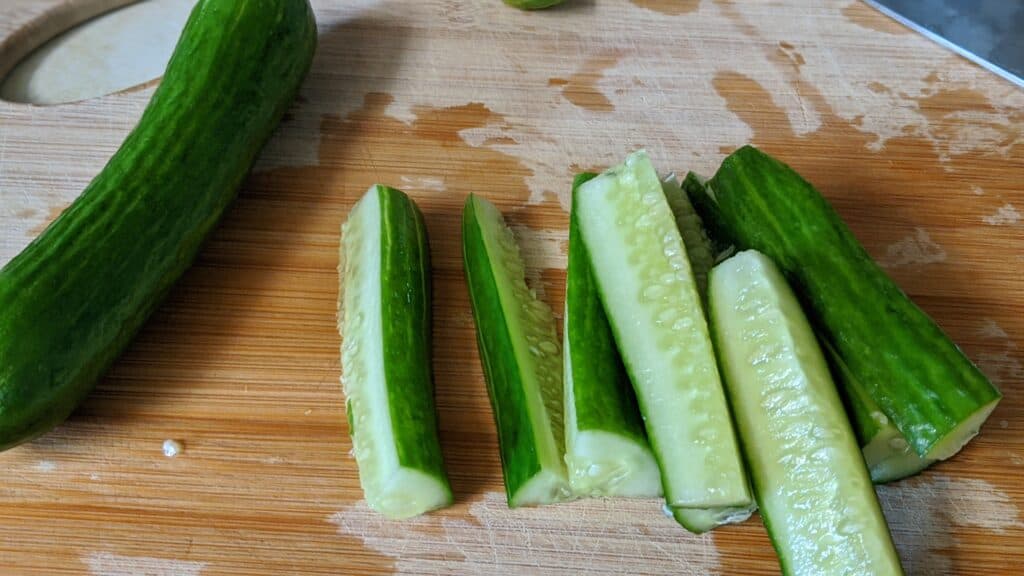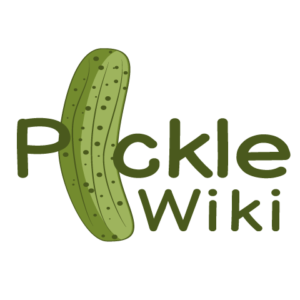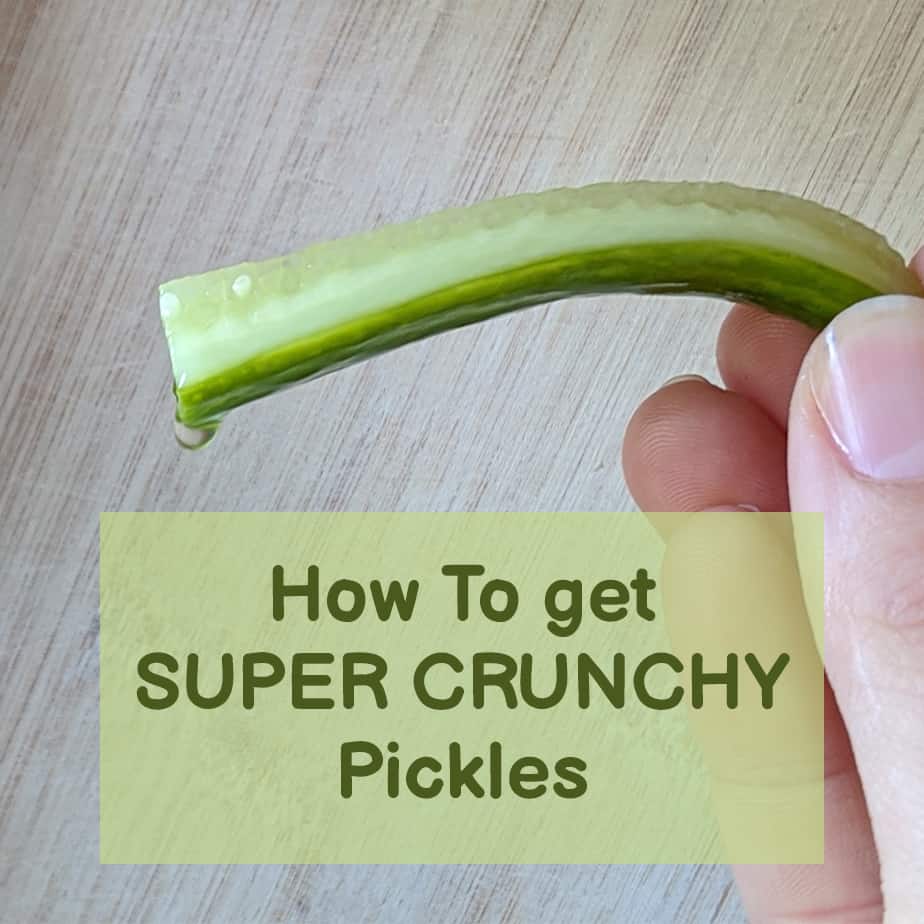Homemade pickles can be an excellent treat at barbeques, picnics, and family gatherings. Most people love a good, crisp, crunchy pickle, but that can be hard to achieve.
Most pickling experts agree that the main problems with getting a reliable, crunchy pickle comes from using the wrong kind of cucumber, the wrong proportions in your pickling brine, or the timing for the process that you’re attempting. They suggest keeping the pickles small, cold, and submerged in a carefully measured brine.
This may sound complicated, but really, it’s a game of matching up a problem with process correction. Here’s how to properly troubleshoot your pickling process to get the perfect crunchy pickle every time.
Why Are My Homemade Pickles Not Crunchy?
If your pickles are routinely coming out mushy and soft rather than crisp, you’ll need to reevaluate the way you make them. There are a few factors you can look at to try and find out where your process is going wrong.
- You might consider looking at your initial cucumber pick. Overripe cucumbers or cucumbers that are too large for your brining container won’t crisp up as much as you might like them too. You may also be doing some damage to your pickles if you’re not jarring them quickly enough, storing them properly before jarring.
- Consider the container that you’re using as well, as overpacking your brining container with too many cucumbers will mean that they won’t be fully submerged or saturated with the brine, causing them to come out with an uneven taste and texture.
- You may also be using the wrong proportions of vinegar and water in your pickling solution. If there isn’t enough salt to pull moisture out, your cucumbers will be oversaturated and somewhat soggy. You might not be using enough brine, leaving some surfaces of the cucumber exposed and improperly preserved.
- You could also be using too high of a heat processing temperature. This will over soften your cucumbers after the bringing process, breaking down the natural crunch still present in the vegetable.
- Your pickles may also be suffering from the use of unfiltered water. Trace amounts of chlorine and certain minerals may interfere with the brining process, preventing proper preservation and flavor development.
You shouldn’t be discouraged by a few less-than-perfect attempts. Pickling is a tricky process to get right and can take a while to get right reliably every time. There’s nothing wrong with finding a few ways not to make pickles along the way.
How to Make Sure Your Pickles are Super Crunchy
The wonderful thing about the pickling process is that even though it is tricky and particular to get right, all of the significant problems that come with it have relatively simple solutions that are easy to pick up on and remember.
Choosing the Right Kind of Pickle

First, you need to find the correct kind of cucumber to pickle. Ideally, you’ll want to pick them yourself or buy them from a local farmer’s market. Consider using smaller, just ripe cucumbers. These will tend to be more naturally firm, making it easier for them to achieve that satisfying crunch.
Make sure that you remove the blossom from the end of the cucumber, as certain enzymes in it might cause the pickle to soften.
You’ll also want to jar your cucumbers immediately after picking if possible. If this isn’t possible, place your cucumbers in an ice water bath for up to six hours before jarring. The Prairie Homestead recommends picking your cucumbers before 9 am, claiming that this will make them sweeter and crisper.
Choosing the Right Container
Generally, the most accessible container to use for pickling is a small glass jar with a sealable lid that doesn’t let metal come into direct contact with the brining mixture (as an acidic liquid like a brine can eat away at metal over time).
There are a variety of lids and weights that can be supplemented, from glass to plastic. Still, the main thing is to make sure your cucumbers will fit, either whole or cut into wedges, entirely within the container, allowing for the brine to cover the top and all sides with a small air pocket to allow for burping (releasing the gas that builds up during the brining process).
Proportioning Your Bringing Mixture
Alton Brown of The Food Network’s “Good Eats” suggests using a brine made of five ounces of salt in one gallon of water, which would then be poured over your cucumbers and spices. He weighs down the cucumbers with a bag of water to keep them fully submerged.
Interestingly, he recommends using filtered water in the weight for your container’s lid (if you’re not using a sealed container), as, if it leaks, it won’t introduce any unwanted chemicals or impurities into the brine.
His process calls for keeping your pickling container in a temperature-controlled area and maintaining a constant temperature between 68- and 78-degrees Fahrenheit for at least three days before moving them into a refrigerator for long-term storage.
Controlling Your Heat Process
If you’re making pickles to keep for a longer time, you’ll need to heat process your cucumbers after bringing them. This process is naturally going to soften your pickles slightly, so some loss of firmness is to be expected, but you can still get a solid snap with heat-processed pickles if it’s done right.
Keep your temperature low and your cooking time short. Simply Canning recommends using a water bath of between 180- and 185-degrees Fahrenheit for up to 30 minutes.
You can avoid this particular problem by switching to a fresh-pack or quick process pickling method, which doesn’t require heat processing at all. This kind of pickle will not keep as long as a fermented pickle will, but if you’re going through pickles quickly (making for an event or a large family, or even yourself if you’re particularly taken with them!), that shouldn’t be a problem.
Add Tannins
For extra crunch, you can add some form of tannins to your pickling mixture. Speaking on a technical level, tannins are a kind of astringent which, in more massive amounts, have been used to dye leather and stain wood, but in small, controlled amounts, can prevent the cucumbers’ cell walls from being broken down. This goes a long way toward improving the structure of the final pickle and leaving it crunchy.
Tannins can be found pretty quickly and can be used in the form of black tea, grape leaves, or even oak leaves. Edible Alchemy recommends adding to your brine mix of one-eighth of a cup of black tea per one liter of water.
A Warning Against Lime
Several older recipes recommend using food-grade lime to introduce calcium into your pickles. This is no longer recommended as the use of lime has been found to the presence of botulism in the finished product. Instead, most experts recommend using a unique pickling salt and an ice bath before storing your pickles.
Reach Out and Ask Questions of Fellow Picklers
Humans have been pickling things since the dawn of society. It’s one of the oldest and most reliable methods of preserving food, and it makes a fantastic final product! This long history means that you’ve got plenty of resources to turn to when things don’t go quite right.
Reach out to your local farmers and small markets to ask for tips, or go online to see tutorials and consult more massive forums. Odds are, if you have a question, so do many others, and even more will have the answers.
There’s no shame in changing your process. It means that you’re growing and learning and that you’re putting in the effort to make a solidly good preserve. It also means that you’ll have plenty of pickles to eat! There’s no losing here.

